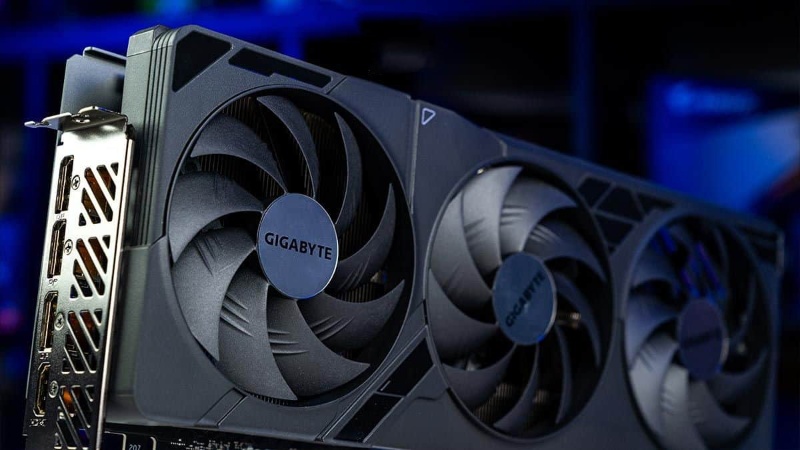1. Introduction: When Your GPU’s Memory Doesn’t Let Go
You’re in the middle of an intense gaming session or a critical design render when things start to go wrong. What began as smooth, high-performance operation gradually degrades into a frustrating slideshow. The frame rate stutters, applications freeze, and eventually, everything crashes to a halt—even though you’re using a powerful, modern GPU. If this scenario sounds familiar, you might be dealing with a GPU memory leak.
A GPU memory leak occurs when a software application allocates video memory (VRAM) but fails to release it back to the system once the task is complete. Like a blocked sink, memory keeps accumulating until the GPU’s resources are completely exhausted, leading to severe performance issues and crashes. This guide will provide a clear, step-by-step process to help you identify, diagnose, and fix GPU memory leak issues, ranging from simple application settings to more advanced solutions. Furthermore, we’ll explore how for AI developers and enterprises, the most effective long-term “fix” might not be troubleshooting software, but rather adopting a managed hardware infrastructure like WhaleFlux.
2. Step 1: Diagnosis – Confirming it’s a GPU Memory Leak
Before you start changing settings or reinstalling software, it’s crucial to confirm that you’re actually dealing with a memory leak and not just high memory usage from a demanding application.
How to Monitor VRAM Usage:
- Windows Task Manager: The easiest method. Press
Ctrl+Shift+Esc, click on the “Performance” tab, and select your GPU. Look at the “Dedicated GPU Memory” graph. - Third-Party Tools: For more detailed information, use tools like HWMonitor, GPU-Z, or MSI Afterburner. These provide real-time data on memory usage, temperatures, and clock speeds.
Differentiating a Leak from High Usage:
- Normal High Usage: VRAM usage increases when you load a new game level, start a render, or open a large file. It stabilizes at a high level and decreases significantly when you close the application.
- GPU Memory Leak: VRAM usage climbs steadily over time, even when you’re idle in a game menu or not performing any new actions within the application. The usage does not drop back down appropriately and will often continue to rise until the application or system crashes.
3. Common Culprits and Initial Fixes
Once you’ve confirmed a leak, start with these common solutions.
A. Application-Specific Issues
The software you’re using is the most likely source of the problem. Bugs in the code can prevent it from correctly managing memory.
- Focus on Modded Environments: Platforms like Forge and Fabric for Minecraft are common examples. An incompatible or poorly coded mod can easily cause a memory leak.
- Solution: Update the game or application to the latest version. Use the platform’s “Verify Integrity of Game Files” feature (available on Steam and other launchers) to repair corrupted data. If you use mods, try disabling them all and re-enabling them one by one to identify the culprit.
B. Driver Issues
Outdated, corrupted, or incorrectly installed graphics drivers are a frequent cause of instability and memory leaks.
- Solution: Perform a clean driver installation using a tool like DDU (Display Driver Uninstaller). This utility completely removes all remnants of your current GPU drivers, allowing you to install a fresh version without any conflicts. Simply downloading a new driver over an old one is often insufficient.
C. Operating System and Settings
Background processes and power-saving features can sometimes interfere with how an application manages memory.
- Solution: Ensure your operating system (e.g., Windows) is fully updated. In your GPU’s control panel (NVIDIA Control Panel), set the power management mode to “Prefer Maximum Performance” for the specific application or globally. This prevents the GPU from entering a low-power state that might cause management issues.
4. Advanced Troubleshooting: Digging Deeper
If the basic fixes don’t resolve the issue, it’s time to look deeper.
- Advanced Profiling: Software developers can use profiling tools like NVIDIA Nsight to pinpoint the exact line of code causing the leak. This is typically only feasible if you have access to the application’s source code.
- Clean Boot: Perform a “clean boot” in Windows to start the system with a minimal set of drivers and startup programs. This can help you determine if a background application is causing a conflict.
- Hardware Check: While rare, faulty GPU hardware can manifest as memory errors. Running stress tests like FurMark can help rule this out, but a software-based leak is far more common.
5. The Bigger Picture: When “Fixing” Isn’t Enough for AI Workloads
The methods above are effective for fix memory leak GPU issues in games and standard applications. However, there is a fundamental limit to what troubleshooting can achieve. For professionals in fields like artificial intelligence, the problem often isn’t a software bug—it’s a hardware ceiling.
AI developers training large language models (LLMs) face a different challenge. The problem isn’t a leak where memory is incorrectly held; it’s that the models themselves have legitimate, enormous memory demands that exceed the capacity of even the most powerful consumer GPUs. After you’ve optimized your code to the best of your ability, you may still hit a wall. A single workstation equipped with an RTX 4090 (featuring 24GB of VRAM) can easily be overwhelmed, resulting in “Out of Memory” errors that bring critical projects to a standstill. In this context, the constant battle to free up memory on local hardware becomes a significant bottleneck to innovation and productivity.
6. The Proactive Solution: Stable, Scalable GPU Power with WhaleFlux
What if, instead of constantly fighting against hardware constraints, you could access virtually limitless GPU resources on demand? For AI enterprises, the most effective strategy to overcome memory bottlenecks is to shift from local troubleshooting to a managed, cloud-native infrastructure. This is where WhaleFlux provides a transformative solution.
WhaleFlux is an intelligent GPU resource management platform designed specifically for the demands of AI enterprises. It moves beyond the limitations of single workstations by optimizing the utilization of multi-GPU clusters. Its core mission is to ensure that memory-intensive AI tasks, such as LLM training, have consistent and reliable access to the computational resources they need, thereby eliminating crashes and accelerating development cycles. By intelligently scheduling and managing workloads across a cluster, WhaleFlux ensures stability and efficiency that is impossible to achieve on a local machine.
7. Why WhaleFlux is the Ultimate “Fix” for Scalable AI
WhaleFlux addresses the root cause of memory limitations for AI teams in several key ways:
- Access to High-Memory GPUs: The ultimate solution to a memory ceiling is more memory. WhaleFlux provides seamless access to data-center-grade GPUs engineered for massive parallel processing. This includes the NVIDIA H100 and H200, with their transformative high-bandwidth memory, and the proven NVIDIA A100. This instantly removes the VRAM barrier imposed by consumer cards, allowing data scientists to train larger, more sophisticated models without constant resource anxiety.
- Managed Infrastructure, Not Manual Troubleshooting: With WhaleFlux, your team stops being system administrators and can focus entirely on AI development. The platform handles all the underlying complexities: driver compatibility, node health monitoring, workload scheduling, and resource allocation. You no longer need to worry about how to fix GPU memory leak issues on individual machines; the platform ensures a stable, optimized environment for your mission-critical jobs.
- Cost-Effective Scaling: WhaleFlux offers a flexible economic model tailored for sustained development. With options to purchase or rent resources (with a minimum one-month commitment), it provides predictable pricing and resource stability that is often more cost-effective than the high upfront investment and maintenance costs of building in-house GPU servers, or the unpredictable bills from hourly cloud services. This model is designed for production-grade AI work, not just sporadic experimentation.
Conclusion: From Quick Fixes to Strategic Solutions
In summary, software-based GPU memory leaks can often be resolved through methodical troubleshooting—updating applications, clean-installing drivers, and managing mods. These are essential skills for any PC user or developer. However, for AI enterprises pushing the boundaries of what’s possible with large language models, the core issue is often not a bug to be fixed, but a fundamental hardware limitation.
For businesses serious about scaling their AI capabilities, leveraging a dedicated platform like WhaleFlux represents a strategic evolution. It is the most reliable way to eliminate hardware bottlenecks, guarantee stability, and ensure that projects can scale efficiently. It transforms GPU memory management from a technical headache into a seamless, managed service.
Tired of hitting memory walls? Let WhaleFlux provide the stable, high-memory GPU resources your AI projects need to succeed.

